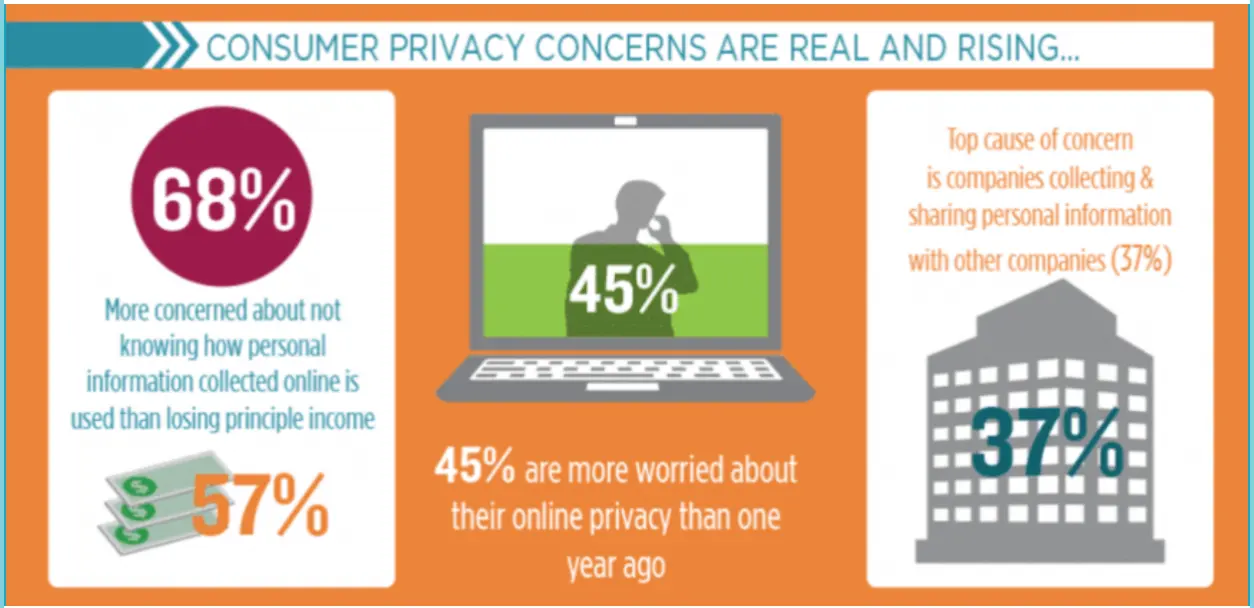2021 has seen a shift in customer service support toward digital channels.
Businesses had to quickly develop new ways to deliver excellent client experience. Today, even those who were just considering the possibility of going digital have now fully embraced eCommerce.
As consumers are slowly recovering from the massive unemployment that hit as the pandemic started, the changes in their purchasing behavior are here to stay. No one wants to wait for a few days to get their items delivered anymore or stay on hold to talk to a customer support representative.
Consumers expect businesses to put themselves in their shoes and help rather than focus on profits.
Here are the top customer experience trends to expect in 2022:
- First-party data
- Multichannel service
- Human-first data collecting
- Reduced response times
- Improved CX on mobile
- Same-day shipping
- Sustainability
-
First-party data
Statistics show that over two-thirds of consumers switch between 3 communication channels to receive support.
The expectation for a seamless experience across all channels has been hardening, and consumers understand that data collection drives this experience.
Harris has found that almost 70% of consumers are willing to give their personal details to their favorite brands in return for valuable CX.
Simultaneously, the same poll shows that privacy is the main area where most businesses fall short.
That’s why, in 2022, the data collected through a company’s own systems will become the foundation of marketing strategy.
 Source: Medium
Source: Medium
Indeed, third-party data isn’t enough to meet the demands of a modern consumer. Marketers need the brand’s own data to achieve a deep understanding of customer needs and precision targeting.
And by gathering data from the company’s website, lead analytics, web and mobile applications, email, CRM, and call center, they can see how customers move across channels throughout their customer journey and optimize conversion tactics.
Finally, businesses that manage to give up third and second-party data, such as cookies, will get enhanced control over data quality and an extra portion of trust from their clients.
This, however, poses additional responsibilities in terms of data storage and security. That’s why we can probably expect to see companies establish data contracts with their customers as they are aware of phishing.
-
Multichannel service
Omnichannel customer engagement strategies help to retain up to 89% of customers, according to Invespcro. Today, an average customer journey looks like this:
- A customer passes by a shop displaying an item that catches their eye.
- They check out the item on the brand’s website using their phone or another mobile device.
- The customer contacts a sales rep to get a detailed video presentation of the product. They don’t buy the product yet.
- The customer browses the company’s Instagram and spots a discount coupon.
- They click on the coupon and land at the company’s website.
- They finally purchase the item and confirm the pickup closest to their home.
As seen from the example and supported by a survey, consumers’ preference for newer channels such as video, chatting on a website and social messaging continues to grow.
As shown in the same survey, 26% of respondents are likely to stop buying from a company if they can’t switch between communication channels.
This way, having a comprehensive live chat on eCommerce websites is a must.
-
Human-first data collecting
Geo tracking and device listening seem to be perfect growth-hacking tools. Indeed, they provide a vast amount of data that marketers can use to create personalized experiences. These technologies provide a number of advantages:
- The ability to reach audiences located very close to the business itself
- Predict user behavior based on previous interactions
- Provide relevant incentives and increase sales
- Improve search engine rankings
Yet, some consumers tend to see these technologies as intrusive and lose trust in brands collecting this data.
Source: Instagram
Thus, in a Deloitte poll, 68% of respondents found alerts about items on sale helpful.
At the same time, 53% of consumers suggested it’s creepy when their device was listening to them in order to offer a relevant item. The survey also shows that the more established relationship a customer had with a brand, the more helpful they rated the results of digital monitoring.
Therefore, we can predict that brands will focus on cultivating trust, keeping promises, and being transparent and human. Only when customers feel they receive more value than expected, they are willing to share more of their personal details.
-
Reduced response times
Hubspot has found that ⅔ of consumers expect their inquiry to be responded to within 10 minutes. Customers don’t want to wait — and one-third of them are quick to wave goodbye to a business that tests their patience.
Therefore, in 2022, the focus will be on skilled customer service representatives who can quickly process tickets and simultaneously provide support on several channels like a cloud phone system.
What is more, businesses will rely on modern help desk software like JIRA, HappyFox, HelpScout, etc.
Also, in 2020, 63% of customers reported they tried to fix the issue using online resources before getting in touch with a support service. Since then, the popularity of self-service platforms didn’t go any lower.
-
Improved CX on mobile
Most online traffic is coming from mobile devices. The necessity of a mobile-first approach to website building is a must to keep good CX and generate profits. In fact, 57% of consumers say they won’t recommend a company if its website looks bad on a mobile device.
Source: Dinarys
All that means that businesses should work even more to improve customer experience analytics for mobile users. The key factors to consider are displaying relevant content on the right channel and providing embedded software support in a mobile app.
Often, different products are mostly purchased through a website and an Instagram page, and that’s something you should consider in your strategy. As for support, providing help at any time right where your clients are will definitely add points to your CX efforts.
-
Same-day shipping
A purchasing process now has to fit in the customer’s schedule — and that’s among the top factors affecting the decision to buy. As seen from the PYMNTS study, 42% of respondents say they would buy more if they could pay for the items online and pick them up the same day.
Source: Digital Marketing Community
Hence, those businesses that manage to provide same-day delivery or curbside pickup options are more likely to succeed in 2022.
In turn, this sets the increased demand for dispatching automation, accurate inventory management, and local fulfillment centers. The trend also involves the demand for upfront transparent shipping terms along with various payment and delivery methods.
Does it mean that dropshipping is dead? Given the 7% year-on-year increase, not at all.
Yet, to make for the extra waiting time, dropshipping stores should work on a customer-centric attitude and provide maximum comfort in purchasing. By focusing on quality, they can, in fact, increase conversions, despite falling off the same-day shipping CX trend.
-
Sustainability
Customers are more likely to choose a brand that lives by sustainable values. Thus, almost half of UK consumers would recommend buying from a company that addresses environmental issues.
Yet, it turns out to be not as simple as it could seem.
As customers decide to go sustainable, they face a range of difficult questions. Should they recycle clothes or rent them? Does an electric car have a smaller carbon footprint than a hybrid?
Interestingly, there is a visible (31% annual increase) HEV popularity growth in Australia, reflecting an increasing consumer interest in more sustainable vehicle options.
To help your clients navigate these concerns, make your sustainability message concise and clear.
Don’t underestimate your audience's intelligence by greenwashing your product or focusing on things that make a minimal environmental impact. Instead, ask what sustainability means for your customers and how you can translate this into your strategy and product.
Consumer Trends 2022: Focus on Privacy and Comfort
In the coming year, companies should expect to integrate technology to provide even more personalization and precision targeting for excellent CX. At the same time, marketers should focus on building a two-way relationship to mitigate customers’ fears and cater to their need to feel respected and valued.
Customers are also predicted to conduct even more competitor research and show interest in the company's mission. If your business prioritizes customers’ needs, it will be on the right track toward excellence in customer experience.


